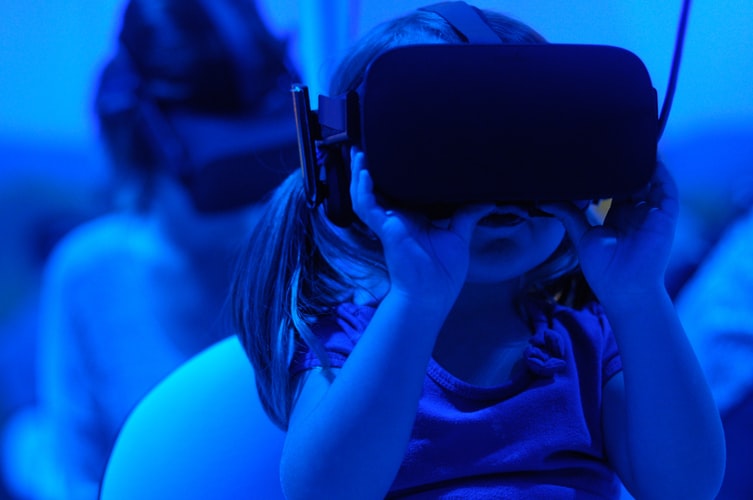Virtual Reality Therapy Likely to Help Children with Balance and Walking, Pooled Analyses Find

Photo by Giu Vicente on Unsplash
Including virtual reality therapy in rehabilitation programs can be a positive and enjoyable way of improving balance and walking ability in children with cerebral palsy (CP), according to a recent review.
In line with the available evidence, its researchers advise using virtual reality therapy as a complement to conventional rehabilitation therapy. But they add that their study’s results should be read with caution, and larger controlled trials should be run to prove virtual reality therapy’s benefits.
The study, “Effect of Virtual Reality Therapy on Balance and Walking in Children with Cerebral Palsy: A Systematic Review,” was published in the journal Developmental Neurorehabilitation.
Virtual reality therapy (VRT) is a frequent component of rehabilitation programs for children with cerebral palsy (CP), helping improve their balance, walking, and general physical activity.
VRT creates virtual environments that simulate real objects and contexts, using visual, auditory, sensory, vestibular (body messages received when one experiences movement), or olfactory stimulation. These stimuli can be displayed on a screen or via a head-mounted device, with the possibility of patient interaction.
The goal is to trigger neurological changes in brain areas involved in the planning, control, and execution of voluntary movements, hopefully improving the motor performance of disabled limbs.
Generally, children enjoy this type of therapy, which can foster their motivation for training. Another advantage is that children can perform real-life activities in a controlled and safer environment, and in ways that are not as discouraging as when they fail to perform a task.
Interested in understanding the benefits of VRT for children with CP, researchers looked for studies published up to July 1019 that would support or disprove VRT’s effectiveness in these children.
They found 26 studies, which included a total of 420 patients ages 6 to 18. Among the studies, two kinds of VRT interventions were applied — most involved a game component (23 studies) while three employed real-time feedback or interactive workouts in a virtual world.
Considerable variability existed among these studies in how VRT was delivered, either in the total amount of therapy (60–4,200 minutes), the duration of each session (15–90 minutes), the period of intervention (1 day to 20 weeks), and where it was performed (supervised by a researcher or therapist, or done at home). Outcome measures to determine benefits for balance and walking also varied across studies.
To specifically determine the effects on balance and walking, two separate pooled analyses of studies, also known as meta-analyses, were done.
Effects in balance were addressed by pooling five randomized controlled studies, involving a total of 69 children with CP given VRT and 71 control patients who did not receive it. Measures of balance included tests for static or dynamic balance.
To determine the effects on walking, four randomized controlled studies were jointly analyzed. As a whole, they included 54 patients in the VRT group and 54 in the control group, and measured improvements in walking speed or walking distance, using different tests (1-minute walk test, 2-minute walk test, 10-minute walk test).
Both these analyses favored a significant effect of VRT in improving balance and walking, with a “large” effect size, the researchers noted.
No adverse effects were reported under the standard implementation of VRT in children with CP.
“For this reason VRT is a promising intervention that could be used during rehabilitation for children with CP as an addition to other appropriate therapies,” the researchers wrote, adding their conclusion also matches previous studies in children with cerebral palsy.
“There is no certainty that using VRT is better than using conventional therapy. The advice is to use VRT complementary to conventional therapy at this moment,” they said. The variety of games available offers the opportunity to make sessions more diverse and keep children motivated, they added.
However, the team stressed that their study’s results “must be interpreted with caution” given the differences in the types of VRT and outcome tests used, the lack of randomized controlled trials, and the relatively small numbers of patients included. Well-conducted trials with a greater number of participants are necessary.
